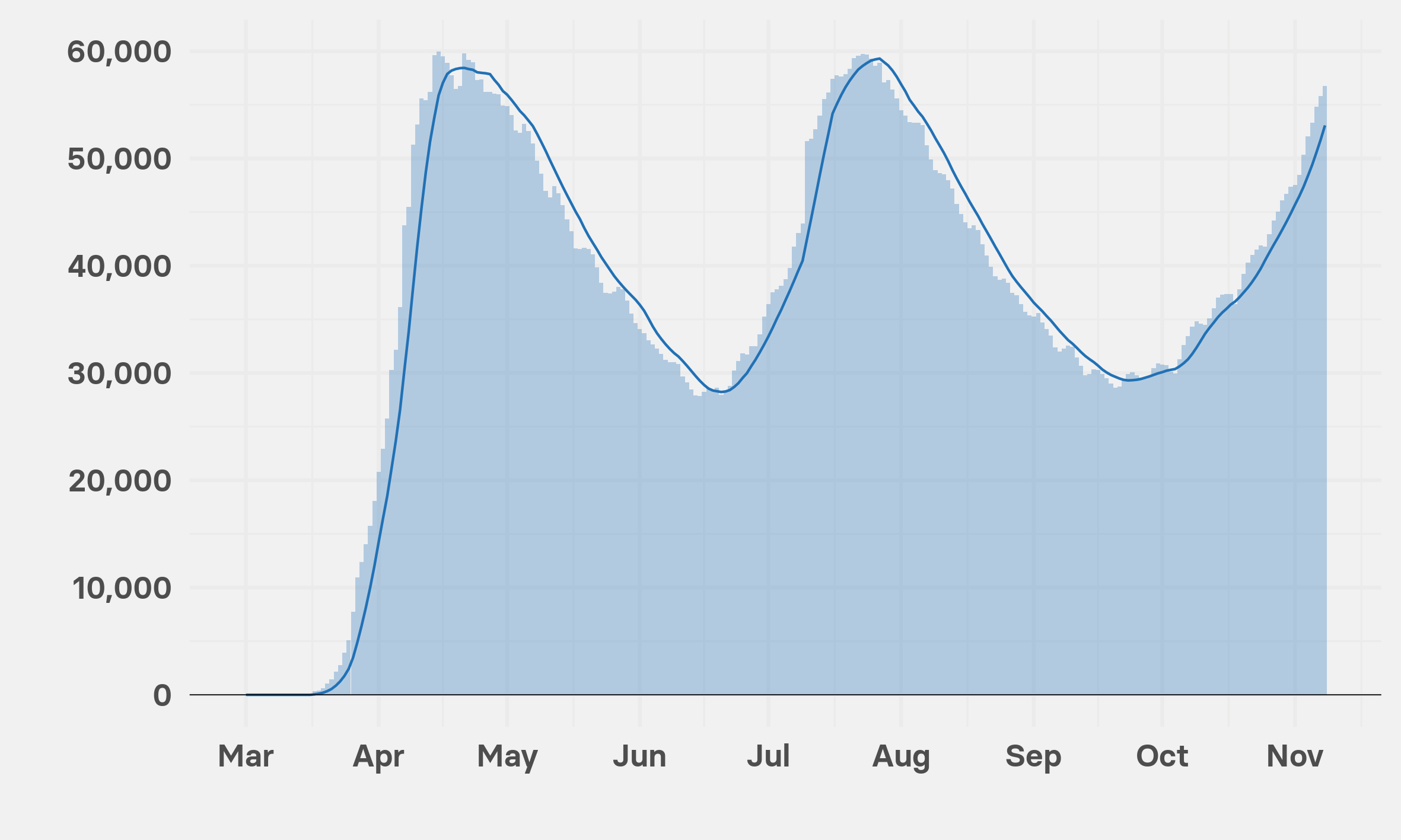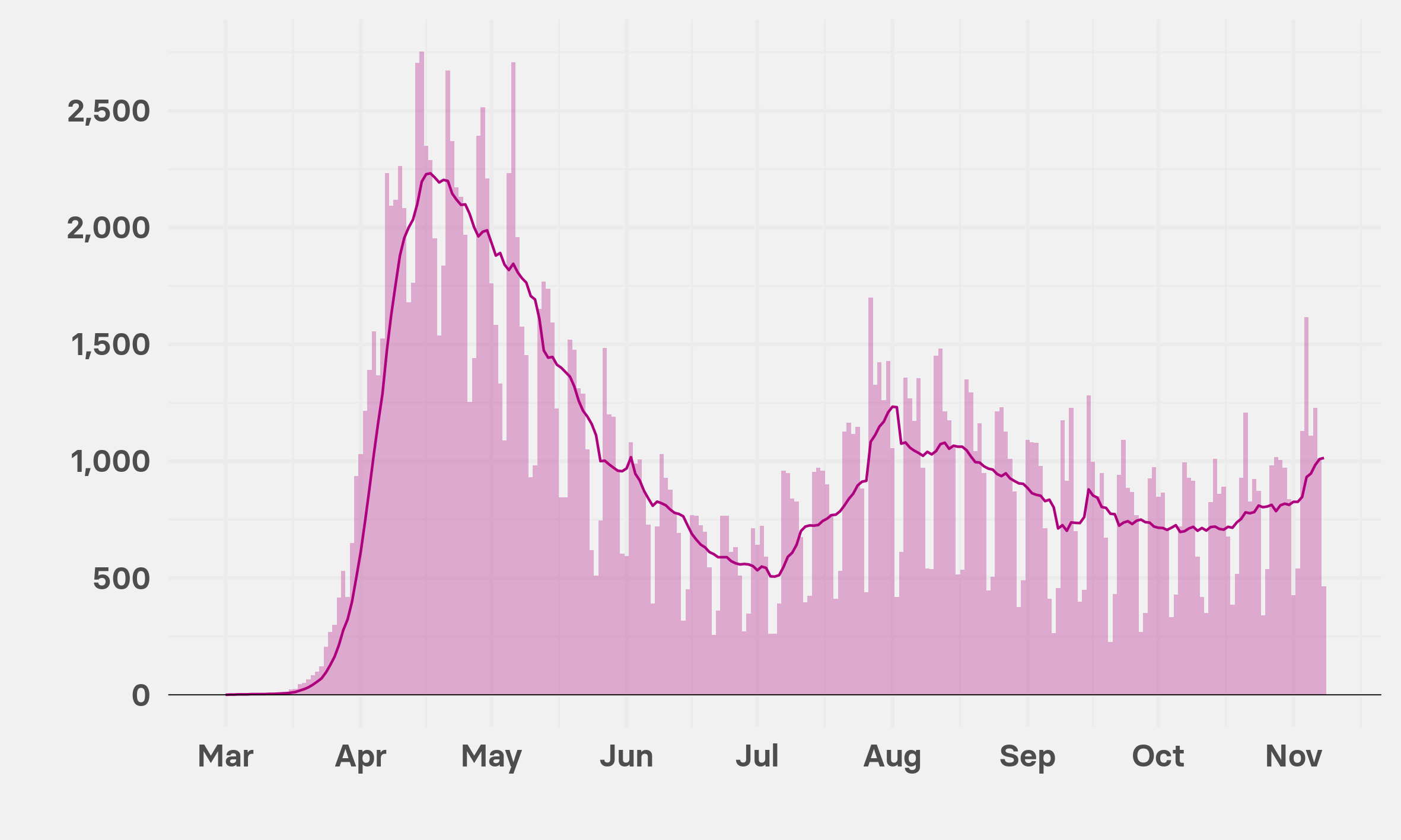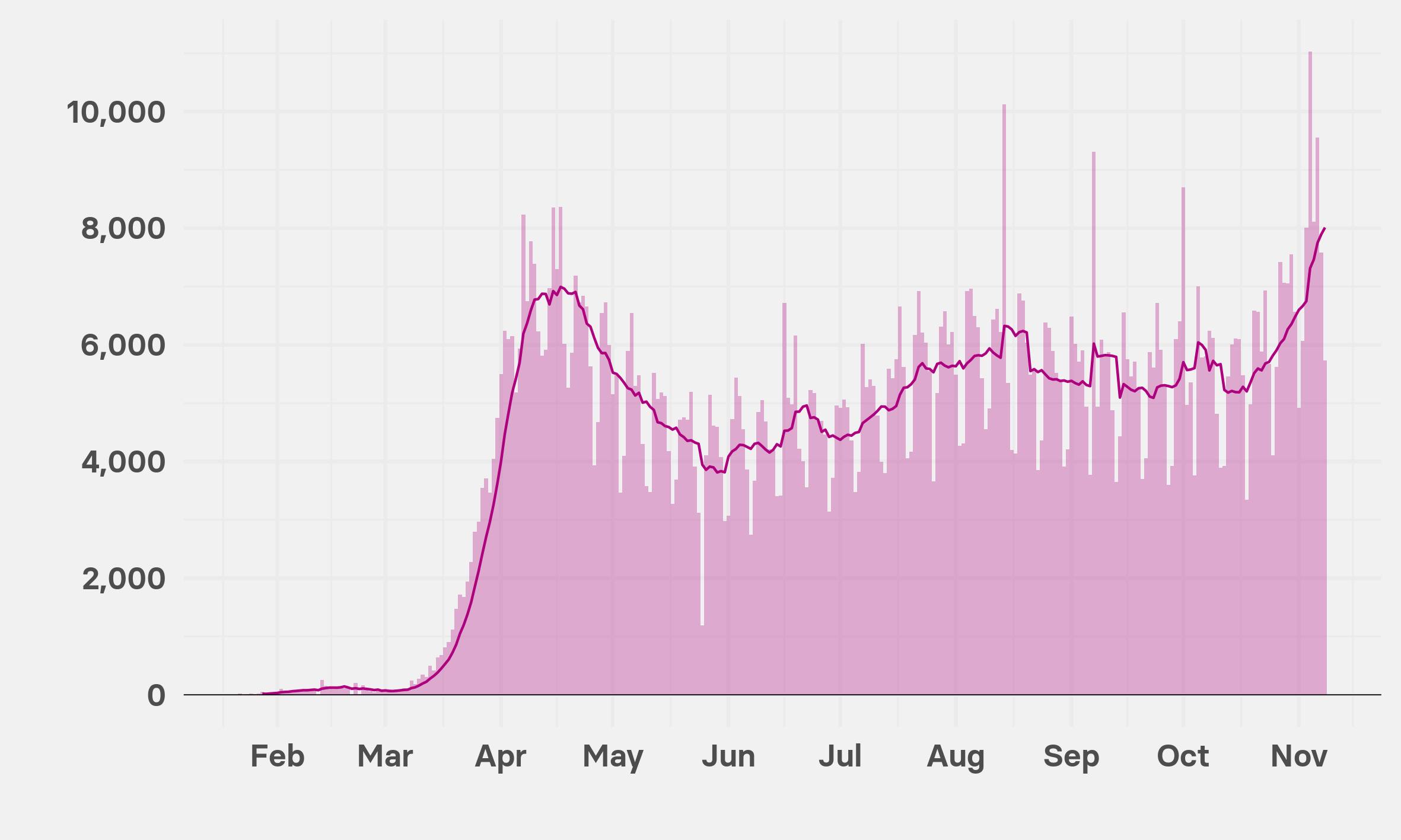
The journalists at BuzzFeed News are proud to bring you trustworthy and relevant reporting about the coronavirus. To help keep this news free, become a member and sign up for our newsletter, Incoming.
The US has passed the milestone of 10 million coronavirus cases since the start of the pandemic, according to data compiled by Johns Hopkins University. The nation’s coronavirus cases currently account for almost a fifth of all cases recorded worldwide.
The milestone was reached just hours after promising news about a coronavirus vaccine trial, as well as President-elect Joe Biden's announcement of the members of his coronavirus advisory board. It underlines the huge challenges the Biden administration will face in bringing COVID-19 under control.
“It’s a tragic milestone,” Georges Benjamin, executive director of the American Public Health Association, told BuzzFeed News. “And I think we’re all afraid that there’s going to be a rapid acceleration of what we’re seeing.”
Recorded cases of COVID-19 are now rising quickly in a third wave that started to take off in September. Initially, the surges were seen mainly in the Upper Midwest and Great Plains states, but the virus is now spreading quickly across most of the country. The US's case numbers are almost certainly a vast undercount, given that many people since the start of the pandemic may have contracted the virus but have not gotten tested.
Most alarmingly, the number of people who are hospitalized with COVID-19 is also rising rapidly and is soon expected to exceed the peaks seen in April and July, when almost 60,000 Americans were in the hospital with the virus.
Daily recorded COVID-19 cases in the US

People currently hospitalized with COVID-19 in the US

Thanks to improvements in treatment, including laying patients on their stomachs to help them breathe and giving those who are most seriously ill the steroid dexamethasone, the death rate among those hospitalized has dropped significantly since the early days of the pandemic.
But as experts had expected when the current surge in cases started to take hold, the death toll across the US is rising once again — the seven-day rolling average just passed 1,000 deaths per day. Late last month, the nation's top infectious disease expert, Anthony Fauci, predicted in an interview with the Washington Post that deaths would rise. “All the stars are aligned in the wrong place as you go into the fall and winter season, with people congregating at home indoors. You could not possibly be positioned more poorly,” he told the paper.
“What we have seen is this is inevitable; case increases are followed weeks later by hospitalization increases, and then are followed by increases in deaths,” said global health lawyer Alexandra Phelan of the Center for Global Health Science and Security at Georgetown University. “We have just seen everywhere that when cases overwhelm public health systems, overwhelm hospitals, that deaths are going to rise.”
While medical measures to treat severe COVID-19 cases have cut death rates, when the number of hospitalized people exceeds capacity, the question becomes whether there are enough healthcare workers available to provide that care.
“When health systems become overwhelmed, as we were in April here in NYC, it is difficult to provide optimal care,” Keith Sigel, an associate professor at the Icahn School of Medicine at Mount Sinai, told BuzzFeed News by email. “This is a concerning situation.”
Daily reported deaths from COVID-19 in the US

Daily reported deaths from COVID-19 worldwide

The US isn’t the only nation grappling with an escalating COVID-19 crisis. Many Latin American countries have high death rates; as the Northern Hemisphere moves into winter, cases and deaths are rising dramatically in Europe, too. Indeed, the daily recorded global death count is now higher than it was in April, when European countries, including Italy, the UK, and Spain, plus US cities, led by New York, Detroit, and New Orleans, were hit hard by the virus.
“The difference between the US and other countries is that we never really, with the exception of New York, got the epidemic under control,” Phelan said.
Moreover, as numbers tick up in other countries, Benjamin said, “they are making really definitive and informed decisions to recontrol the disease — decisions we have not yet made in this country.”


